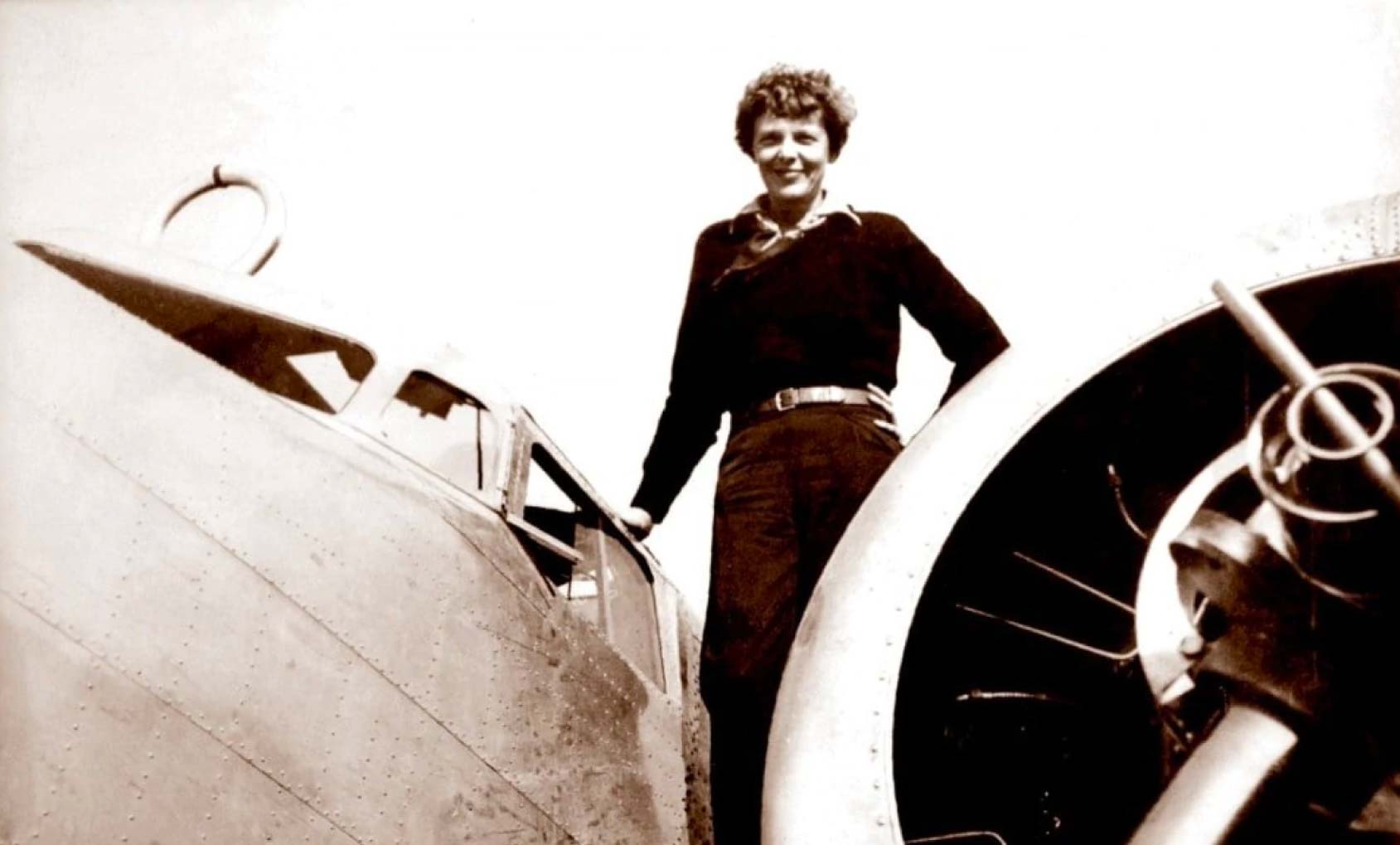As America endured the drab years of the Great Depression, Amelia Earhart’s exploits were a bright spot.
She broke gender barriers by completing solo flights most male pilots hadn’t accomplished and traveled the country speaking of women’s empowerment and the glorious promise of air travel.
Then, she vanished.
Her mysterious disappearance over the Pacific Ocean in 1937 has vexed historians and fueled conspiracy theories for decades. Earhart was declared dead after the U.S. government concluded that she crashed somewhere in the Pacific, her plane sinking to the seabed as she tried to become the first woman to circle the globe.
But an alternate theory of what became of Earhart and her navigator, Fred Noonan, has recently resurfaced in the news.
Ric Gillespie, the director of the International Group for Historic Aircraft Recovery (TIGHAR), thinks Earhart spent her last days as a castaway on a desolate Pacific island.
Stranded after a crash-landing, Gillespie believes, Earhart used the radio from her damaged plane to call for help for nearly a week before the tide pulled the craft into the sea.
Gillespie, a pilot and accident investigator, has made 11 expeditions to Gardner Island, in the Western Pacific. He’s trying to raise money for a 12th to support this theory – and maybe find Earhart’s plane.
He posted a video presentation about the Gardner Island theory on YouTube last month and recently touted “New Research, New Evidence, New Understanding.”
But, he said: “We’ve been testing this hypothesis for 28 years. … This supposed new theory is actually the oldest theory.”
“We found a tremendous amount of support for it,” Gillespie added.
Some of that support comes from Earhart’s radio signals seeking help, which investigators say most likely emanated from an area near Gardner Island, Gillespie said.
And a 1937 British expedition exploring the island for settlement snapped a photo of what Gillespie said shows part of the landing gear from Earhart’s plane sticking out of a reef.
“On an uninhabited island, there shouldn’t be anything sticking up out of the water,” Gillespie said.
Adding to the body of evidence, Gillespie said, the radio in Earhart’s plane could not work if it had been in the water as suspected; yet she sent out radio signals for nearly a week after apparently crashing.
Gillespie said he think the landing was rough but survivable. Earhart had minor injuries; Noonan’s were worse, based on Earhart’s alleged radio calls, which TIGHAR has studied.
(Gillespie and his wife are the only paid members of the Pennsylvania-based group, although he says TIGHAR has a team of experts and more than 1,000 members.)
And the airplane still had fuel – not enough to get anywhere, but enough to power the plane’s battery and work the radio, Gillespie said. He and others at TIGHAR researched how much fuel the plane could carry, then calculated how much the engines had consumed before Earhart’s distress calls.
“She’s out there calling for help,” Gillespie said, adding that radio operators he talked to – and others written about in published reports – felt certain they were listening to Earhart. “They recognize her voice. There’s no doubt in their mind.”
As evidence, Gillespie cites an interview with Betty Clank, a ham radio operator in Florida who claimed to have heard Earhart and was put in contact with TIGHAR.
“What she heard is not just a woman calling for help, there was a man with her and he seemed to be out of his head,” Gillespie said. “And he was grabbing the mic. The whole thing reads like a 911 call.”
The half-hour presentation shows the depth of TIGHAR’s research on Earhart’s final flight. There are topographical maps of the seabed around Gardner Island, details about the paths of radio signals, even calculations about air speed and fuel burn.
In their expeditions, TIGHAR members think they have found other evidence of Earhart’s final days.
According to the Times of London:
“His group has found improvised tools, shoe remains and aircraft wreckage, as well as pieces of a pocket knife, bits of make-up and bone fragments. Mr. Gillespie said that credible radio operators recognized Earhart’s weak voice in a message about six hours after she went missing. She said that she was injured but not as badly as Noonan.
“A Texas housewife also heard her pleas on shortwave radio. In Florida a young radio listener grabbed a notebook and began to transcribe a “very confusing” distress call that may have referenced a shipwreck on the island.”
TIGHAR posted its conclusions about Earhart’s demise on its website.
“Earhart (and possibly Noonan) lived for a time as castaways on the waterless atoll, relying on rain squalls for drinking water,” the site says. “They caught and cooked small fish, seabirds, turtles and clams. Amelia died at a makeshift campsite on the island’s southeast end. Noonan’s fate is unknown.”
Their plane was washed into the Pacific, TIGHAR claims. During a previous expedition, Gillespie says the group found a piece of what appears to be the Electra.
“Whatever remains of the Electra lies in deep water off the island’s west end,” he said.
Gillespie’s Gardner Island theory has its critics, though.
“This group (TIGHAR) comes out every year or two with this info or something like it, show us the proof please!” one tweeted.
Elgen Long, a Navy combat veteran and an expert on Earhart’s disappearance, wrote a book saying her plane crashed into the Pacific and sank.
The metal piece was from a different kind of plane, he told National Geographic.
Long criticized Gillespie in 2014, telling The Washington Post’s Justin Wm. Moyer: “You’ll never convince true believers that they aren’t right. You’re just confusing them with facts.”
But Gillespie, who has referred to Long as “the patron saint of ‘crashed and sank,’” told The Post that scientific discovery has never been linear.
“This is what science really is like,” he said. “You develop a hypothesis. You see if it’s wrong. It’s failure after failure after success after failure. If you do it right, you do make progress. … I am passionate about figuring stuff out. I’m an investigator, a detective at heart.”




